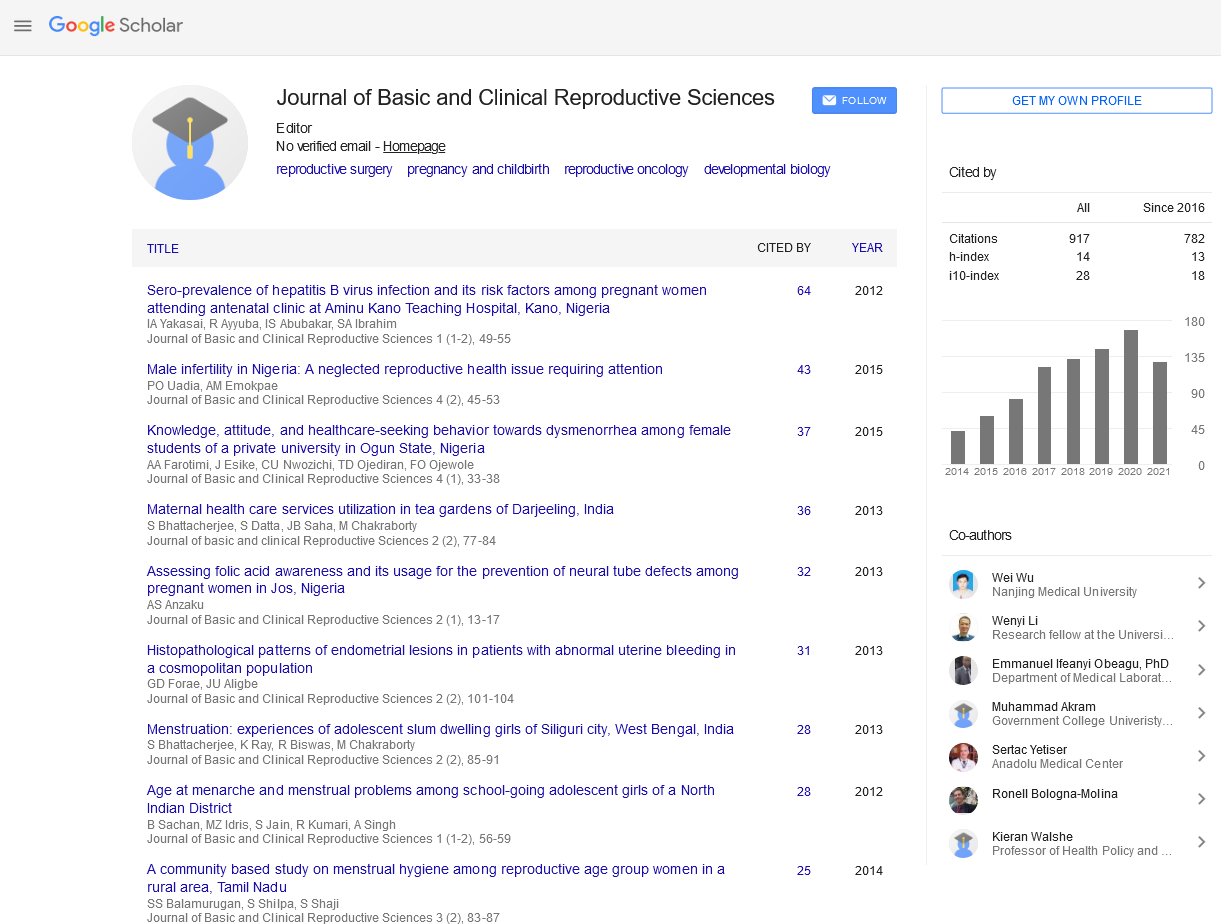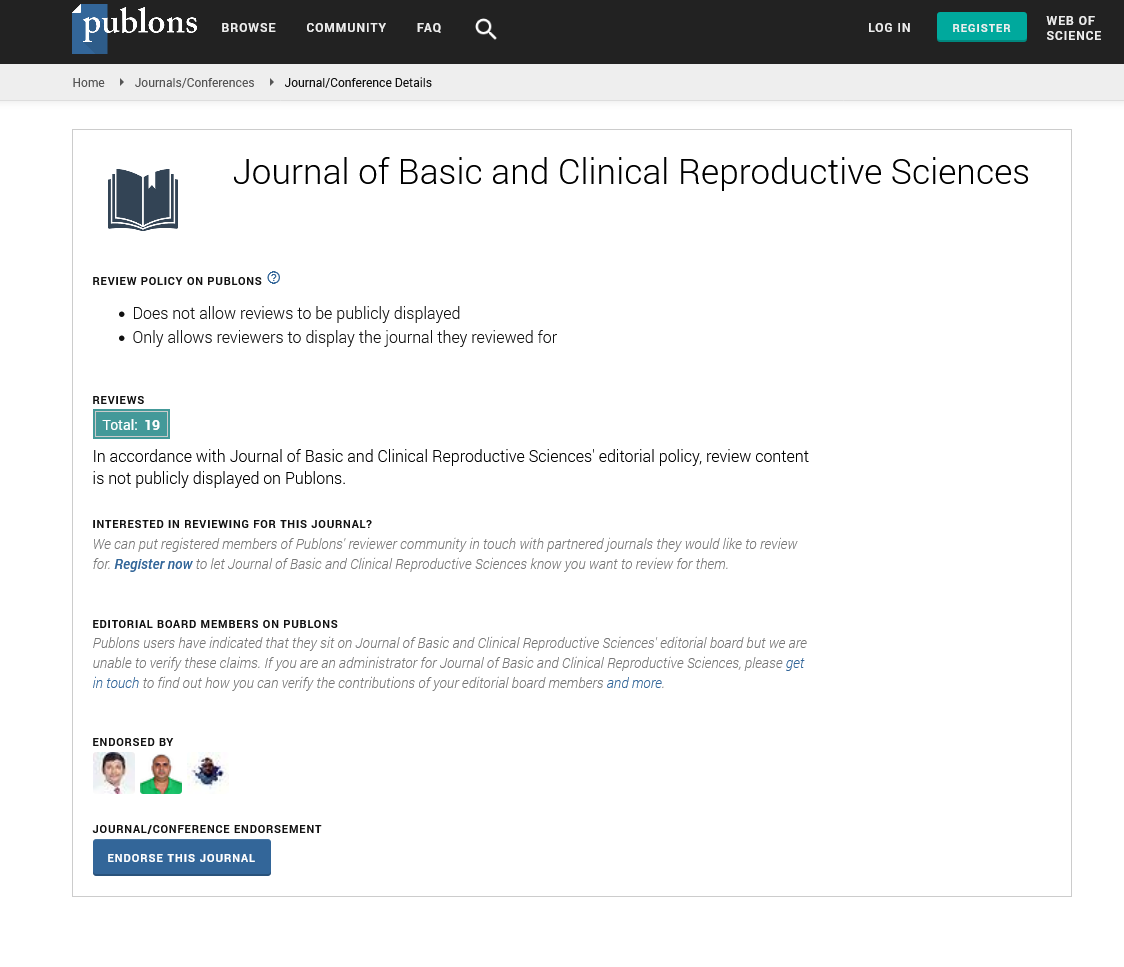Commentary - Journal of Basic and Clinical Reproductive Sciences (2023) Volume 12, Issue 4
Vasectomy Reversal: Surgical Techniques and Factors Influencing Reproductive Outcomes
Received: 31-Jul-2023, Manuscript No. JBCRS-23-114463; Editor assigned: 02-Aug-2023, Pre QC No. JBCRS-23-114463 (PQ); Reviewed: 16-Aug-2023 QC No. JBCRS-23-114463; Revised: 23-Aug-2023, Manuscript No. JBCRS-23-114463 (R); Published: 30-Aug-2023
This open-access article is distributed under the terms of the Creative Commons Attribution Non-Commercial License (CC BY-NC) (http://creativecommons.org/licenses/by-nc/4.0/), which permits reuse, distribution and reproduction of the article, provided that the original work is properly cited and the reuse is restricted to noncommercial purposes. For commercial reuse, contact reprints@pulsus.com
Description
Vasectomy is a commonly performed surgical procedure for male sterilization. Vasectomy is a male sterilization procedure that renders an individual permanently incapable of fathering children. It is a choice made by individuals and couples who no longer wish to have biological children or have completed their desired family size. Vasectomy is a highly effective method of contraception with a failure rate of less than 1%.Vasectomy is a surgical procedure designed to provide permanent contraception for men. It involves the cutting or sealing of the vas deferens, the tubes that carry sperm from the testicles to the urethra, thus preventing sperm from being released during ejaculation. This manuscript serves as a detailed guide to vasectomy, addressing its various aspects. Vasectomy reversal is a surgical procedure aimed at restoring fertility in men who have previously undergone vasectomy. Vasectomy reversal is a surgical procedure performed to reconnect the vas deferens, which were previously cut, tied, or sealed during a vasectomy. It allows men who have undergone vasectomy to potentially regain their fertility and father children. Vasectomy reversal, also known as vasovasostomy or epididymovasostomy, is a surgical procedure that aims to restore the flow of sperm from the testicles to the urethra. It is considered by individuals and couples who have had a change in their reproductive desires or circumstances and wish to have biological children. Vasectomy is a long-term, if not permanent, contraceptive solution. It is highly effective in preventing pregnancy, with a low failure rate. Most men can resume normal activities within a few days after the procedure. Unlike some other forms of contraception, vasectomy does not involve hormonal changes. Over the long term, vasectomy is cost-effective compared to other contraceptive methods. Success rates tend to decrease the longer it has been since the vasectomy. The female partner’s fertility status also plays a significant role in the overall success of the procedure Recovery after vasectomy reversal may take several weeks, and fertility may not return immediately. While rare, complications can include infection, bleeding, and chronic pain.
Surgical process
Local anaesthesia is administered to numb the scrotum. One or two small incisions are made in the upper part of the scrotum. The vas deferens are either cut, tied, or sealed to prevent the passage of sperm. The incisions are closed with stitches or adhesive, and the procedure is complete. Vasectomy reversal involves two primary surgical techniques such as vasovasostomy and epididymovasostomy. Vasovasostomy involves reconnecting the severed ends of the vas deferens, allowing sperm to flow from the testicles to the urethra. In epididymovasostomy cases a blockage is present beyond the point of vasectomy, the surgeon connects the vas deferens directly to the epididymis, a small tube located on the back of the testicle. This technique is more complex and is used when vasovasostomy is not possible. The success of vasectomy reversal depends on various factors, including the length of time since the vasectomy, the surgeon’s experience, and the presence of antibodies against sperm. Overall, vasovasostomy tends to have higher success rates than epididymovasostomy. Following vasectomy reversal, individuals should adhere to specific care guidelines to optimize their chances of achieving pregnancy. Abstaining from sexual activity or use contraception for a specific period after surgery to allow time for the vas deferens to heal. Regular semen analysis is necessary to determine when sperm return to ejaculate and to assess fertility potential. Lifestyle factors such as diet, exercise, and avoiding tobacco and excessive alcohol can impact fertility.
Conclusion
Vasectomy is a well-established, safe, and highly effective method of permanent contraception for men. While it is not easily reversible, it offers advantages such as reliability and cost-effectiveness. Individuals considering vasectomy should consult with a healthcare provider to discuss their options, understand the procedure, and make an informed choice about their reproductive future. Conclusion: The decision to pursue vasectomy reversal should be made after consulting with an urologist or fertility specialist to assess individual circumstances, potential success, and other available options for achieving parenthood.


